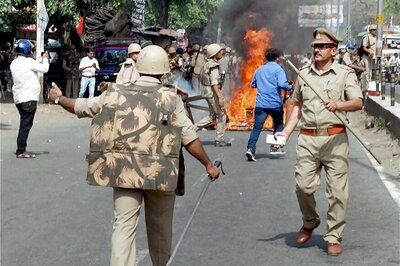Litchis Only a Trigger, Chronic Malnutrition Causing Encephalitis Deaths in Muzaffarpur, Says Expert

views
Patna: While the deaths of over 100 children in Bihar's Muzaffarpur due to Acute Encephalitis Syndrome (AES) has raised an alarm across the nation, speculation over the reason behind the outbreak has increased. From hypoglycemia (a low level of sugar in the body) to litchi consumption, several theories have been put forth as the reason behind the casualties.
While the theory that the consumption of locally produced, unripe and rotten litchis led to the deaths has gained ground, medical experts have blamed ‘malnutrition’. Dr Arun Kumar Shah, an independent child specialist who formerly headed the Bihar chapter of Indian Association of Pediatrics and was part of virologist Dr Jacob John’s team that conducted a research into the AES deaths in Muzaffarpur a few years ago, said consumption of the fruit had only proved to be a trigger for the already malnourished children.
Dr Shah also rejected the claims that hot weather and extreme humidity were the reasons behind the deaths, stating that similar weather conditions prevailed in other parts of the state as well. “Chronic malnutrition is a predispository factor, while unripe and rotten litchis are only the triggering factor for the deaths of children in Muzaffarpur,” he said.
On the basis of the research, it was concluded that evening meals and restricted consumption of litchis were short-term measures that could prevent the deaths, while fighting malnutrition would be a long-term step to root out the problem from the region which is known as a major litchi producer.
Dr Shah said hypoglycemic encephalopathy occurred in children between one to 10 years of age and those who accompanied their parents at work in litchi orchards. As the fruit is harvested around 4 am every day, labourers and their children sleep early the previous evening without having dinner.
Raw litchi, which tastes bad and is not fit for sale, is often consumed by the poor children. Litchi trees abound in Muzaffarpur and adjoining districts and the fruit, in its unripe form, can be accessed by any child in these areas from trees or ground, fallen due to storms, said Dr Shah.
These children eat the unripe and rotten litchis as their first meal at the orchards. As a result of prolonged fasting, which sometimes stretches for more than 12 hours, the malnourished children suffer from hypoglycemia and the process, leading to the triggering of gluconeogenesis (the breaking down of sugar) in their bodies since they have a lower level of glucose stored in their livers.
It was found that unripe and rotten litchis contain methyl cyclopropyl glycine (MCPG), which inhibits the process of gluconeogenesis. This deadly combination of malnutrition and prolonged hypoglycemic status, combined with MCPG, leads to the sugar level in children to dip much below 50, sometimes to zero, and they start showing symptoms of convulsions and high fever, locally known as “chamki bukhar”.
In such a scenario, if a child is administered 10% glucose within four hours of the onset of illness, it can ensure complete recovery. Hence, primary health centres (PHC) were advised to get glucometers, but the administration ignored the suggestion as no lessons seemed to have been learnt from similar outbreaks of encephalitis in 2012, 2013 and 2014.
Dr Shah said that children from urban areas and well-off families never suffered from hypoglycemic encephalopathy as the glycogen storage in the liver was not depleted due to sufficient food consumption. The number of AES cases declines during monsoon as the litchi production season ends by that period, he added.
In 2016 and 2017, the state government and the Centre had focused on creating awareness in the area by distributing oral rehydration solution (ORS) through auxiliary nurse midwives (ANM) and Asha workers and the number of such cases had sharply decreased. But things once again seem to have gone wrong this year, leading to the present crisis.




















Comments
0 comment